
Word Count: 2819
(Note: This resource's metadata has been created automatically by reformatting and/or combining the information that the author initially provided as part of a bulk import process.)

Word Count: 2819
(Note: This resource's metadata has been created automatically by reformatting and/or combining the information that the author initially provided as part of a bulk import process.)

A progressive blog addressing topics such as affordable housing, urban planning, zoning, and public transportation.

Short Description:
This handbook is designed to facilitate a dialogue between an instructional designer and the contents of AIM. You will likely begin with a topic of interest and be led through the resource in a (primitively) intuitive fashion until you arrive at your solution. Seeing this resource was designed from a workflow, the chapter structure is fluid, meaning there are multiple trajectories you might take through the materials, depending on the way you answer the embedded questions.
Word Count: 7137
(Note: This resource's metadata has been created automatically by reformatting and/or combining the information that the author initially provided as part of a bulk import process.)
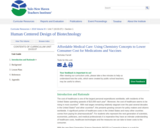
he cost of healthcare is one of the largest personal expenditures worldwide, with residents of the United States spending upwards of $10,000 each year. A significant portion of healthcare costs in the United States and many other countries comes from paying for prescription medications. This unit is designed to give 9-12th grade chemistry, pharmacology, or biology students an introduction to prescription drug costs and what scientific measures can be taken to lower costs. Topics necessary for this unit include the relationship between structure and function, pH, activation energy, the relationship between temperature and reaction rate, catalysts, inhibitors, among additional concepts. This unit functions as an end-of-year project incorporating all of the topics listed above and challenges students to conduct research, design their own strategy to lower drug costs, and prove their viability and cost-saving potential through calculation. Individually or in pairs students must pick a strategy or technology, spend a day or more researching it, two days writing a research paper on it, one day preparing a class presentation, and one day for presentations. Student’s ability to effectively prove the viability of their strategies/technologies as well as estimate the cost savings to consumers will be weighted heavily.

This contemplative practice inquires into the complex web of interdependencies linking global climate change, the War on Terror, Afghan poppy production, opiate addiction, and food security through the lens of systems theory. The exercise challenges students to consider these linkages not only conceptually but also somatically and emotionally.
(Note: this resource was added to OER Commons as part of a batch upload of over 2,200 records. If you notice an issue with the quality of the metadata, please let us know by using the 'report' button and we will flag it for consideration.)

The presentation explores the political, social, and religious history of the states, kingdoms, and empires of African from roughly the fifteenth century through the twentieth century. It looks at the slave trade within Africa and the Atlantic Slave Trade.

This course considers how, despite its immense diversity, Africa continues to hold purchase as both a geographical entity and meaningful knowledge category. It examines the relationship between articulations of “Africa” and projects like European imperialism, developments in the biological sciences, African de-colonization and state-building, and the imagining of the planet’s future. Readings in anthropology and history are organized around five themes: space and place, race, representation, self-determination, and time.

Students will learn the research process by researching an African American Hero. They will use the Oregon Library Information System's 4 step process:1. Plan2. Find3. Create4. Present
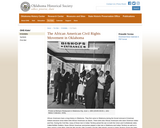
African Americans have a long history in Oklahoma. They first came to Oklahoma during the forced removal of American Indians because some tribes held African Americans as slaves. There were also African Americans who were American Indian and free. During the Civil War, many of these men in Indian Territory joined the war on both the Union and Confederate sides. Called Buffalo Soldiers, these African American servicemen played a vital role in Oklahoma and Indian Territory as well as in other regions of the West. Both the 9th and the 10th Cavalries and the 24th Infantry served in Indian Territory during the latter nineteenth century. Stationed at Fort Gibson, the 1st Kansas Colored Volunteers Infantry Regiment (later supplemented with the 2nd Kansas) fought at Cabin Creek and at the pivotal engagement of Honey Springs in July 1863. After the Civil War ended in 1865, all of the slaves in the United States, including Indian Territory, were freed. Known as freedmen, many continued living among the Indians.
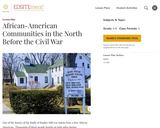
One of the heroes of the Battle of Bunker Hill was Salem Poor, an African American. Black people fought on both sides during the American Revolution. Census data also reveal that there were slaves and free Blacks living in the North in 1790 and after. What do we know about African-American communities in the North in the years after the American Revolution?

The documents included in this lesson come from The North Carolina Experience collection of Documenting the American South and specifically focus on African Americans and race relations in the early 20th century. The lesson juxtaposes accounts that relate to both the positive improvements of black society and arguments against advancement. Combined, these primary sources and the accompanying lesson plan could be used as a Document Based Question (DBQ) in an advanced US history or African American history course.
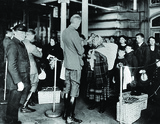
By the end of this section, you will be able to:Identify the factors that prompted African American and European immigration to American cities in the late nineteenth centuryExplain the discrimination and anti-immigration legislation that immigrants faced in the late nineteenth century
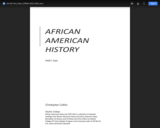
African American History for HIST 244 is a collection of selected readings from African American
History (Lumen), American Yawp, Boundless US History, and US History by Chris Collins for
Skyline College ZTC Early Adopter Program and is licensed under CC BY-NC-SA 4.0, unless
otherwise indicated.
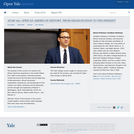
The purpose of this course is to examine the African American experience in the United States from 1863 to the present. Prominent themes include the end of the Civil War and the beginning of Reconstruction; African Americans' urbanization experiences; the development of the modern civil rights movement and its aftermath; and the thought and leadership of Booker T. Washington, Ida B. Wells-Barnett, W.E.B. Du Bois, Marcus Garvey, Martin Luther King Jr., and Malcolm X. WARNING: Some of the lectures in this course contain graphic content and/or adult language that some users may find disturbing.
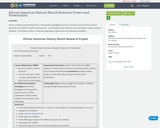
This is a research project designed for 3-5th grade using digital resources to research various famous African Americans from both the past and the present. It incorporates data collection and presentation using a variety of materials. Presentation options could vary depending on grade level and material accessability.
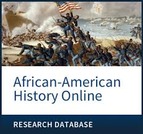
Videos that show how to use African American History Online, a database provided by Shelton State Community College to its students.All videos are close captioned.
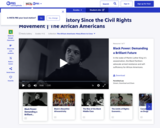
In this media gallery, you will find a series of videos from The African Americans: Many Rivers to Cross that examines the major movements and turning points in African American history from 1968 to the present, including the Black Panthers and the Black Power movement, Afrocentricity in culture, the rise of the black middle class, the development of hip hop culture, the effects of the War on Drugs, and the election of Barack Obama. As you view the videos, consider the legacy of the civil rights movement, the tensions that emerged from the progress made, and how they reshaped the African American experience.

Word Count: 61709
(Note: This resource's metadata has been created automatically by reformatting and/or combining the information that the author initially provided as part of a bulk import process.)
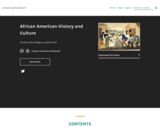
Word Count: 64008
(Note: This resource's metadata has been created automatically by reformatting and/or combining the information that the author initially provided as part of a bulk import process.)
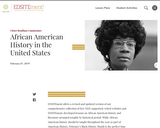
Our Teacher's Guide offers a collection of lessons and resources for K-12 social studies, literature, and arts classrooms that center around the achievements, perspectives, and experiences of African Americans across U.S. history. Below you will find materials for teaching and learning about the perspectives of slaves and free African Americans during the American Revolution, the work of the Freedman’s Bureau during and after Reconstruction, the artistry of Jacob Lawrence, the reality faced by African American soldiers returning home after fighting in WWI, the songs and efforts of the Freedom Riders during the long civil rights movements, and the works of Lorraine Hansberry, Langston Hughes, Zora Neale Hurston, and Maya Angelou.